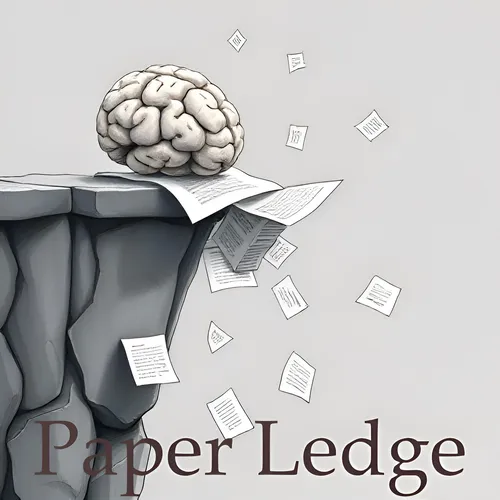Computer Vision - VLA-Mark A cross modal watermark for large vision-language alignment model
- Author
- ernestasposkus
- Published
- Tue 22 Jul 2025
- Episode Link
- https://www.paperledge.com/e/computer-vision-vla-mark-a-cross-modal-watermark-for-large-vision-language-alignment-model/
Hey PaperLedge crew, Ernis here, ready to dive into some fascinating research! Today, we're tackling a paper about protecting the creative work of AI – specifically, those impressive vision-language models. You know, the ones that can generate images from text descriptions, or write captions for photos. Think of it like this: imagine you're a digital artist, and an AI can perfectly copy your style. How do you prove your work is original?
That's the problem this paper, titled "VLA-Mark," is trying to solve. See, these AI models are getting REALLY good, but that also means it's getting easier for someone to copy their output. We need a way to watermark the AI's creations, like a hidden signature only we can detect, without ruining the quality of the work. Think of it like adding a secret ingredient to a recipe – it's there, but you can't taste it!
Now, existing methods for watermarking text often mess things up when you're dealing with images too. They can disrupt the relationship between the words and the pictures. The paper points out that these methods choose words to subtly alter in a way that throws off the whole vibe. It's like changing a few key ingredients in a dish – it might still be edible, but it’s not the same delicious meal.
Here's the clever part: VLA-Mark, the method proposed in this paper, keeps the watermarking process aligned with both the visual and textual elements. They use something called multiscale visual-textual alignment metrics. Sounds complicated, right? Well, imagine the AI looks at both small details (like individual objects in the image) and the big picture (the overall scene), and then checks if the text matches both levels. It's like making sure every instrument in an orchestra is playing the right note, and that the whole orchestra sounds beautiful together.
The core idea is to subtly adjust the AI's text generation process in a way that embeds a secret watermark, but only when it knows the text is strongly connected to the image. This is all done without retraining the AI!
To do this, VLA-Mark uses a system that dynamically adjusts how strong the watermark is. When the AI is confident about the connection between the image and the text, it adds a stronger watermark. When it's less sure, it backs off, prioritizing the quality of the generated text. It's like a chef carefully adding spices – a little at a time, tasting as they go, to get the perfect flavor.
The results are pretty impressive. According to the paper, VLA-Mark creates watermarks that are much harder to detect (meaning they don't ruin the quality of the generated content). At the same time, the watermarks are also very resistant to attacks, like someone trying to paraphrase the text to remove the watermark. Imagine someone trying to copy your signature – VLA-Mark makes it almost impossible!
- Lower Perplexity: The text sounds more natural.
- Higher BLEU Score: The text is more accurate and relevant to the image.
- High AUC Score: The watermark is easily detectable by the owner, but nearly impossible for others to find.
- High Attack Resilience: The watermark stays put even if someone tries to remove it.
So, why should you care about this research? Well:
- For artists and creators: This is about protecting your intellectual property in the age of AI.
- For AI developers: This is about building responsible and trustworthy AI systems.
- For everyone: This is about ensuring that AI is used ethically and fairly.
This paper is laying the groundwork for a future where AI-generated content can be protected, allowing creativity to flourish without fear of theft. But this begs the questions:
- Could this kind of watermarking technology be used to track the origin of misinformation or deepfakes?
- How will we balance the need for watermarking with the potential for censorship or control of information?
Food for thought, PaperLedge crew! Until next time, keep exploring the edge of knowledge!
Credit to Paper authors: Shuliang Liu, Qi Zheng, Jesse Jiaxi Xu, Yibo Yan, He Geng, Aiwei Liu, Peijie Jiang, Jia Liu, Yik-Cheung Tam, Xuming Hu
